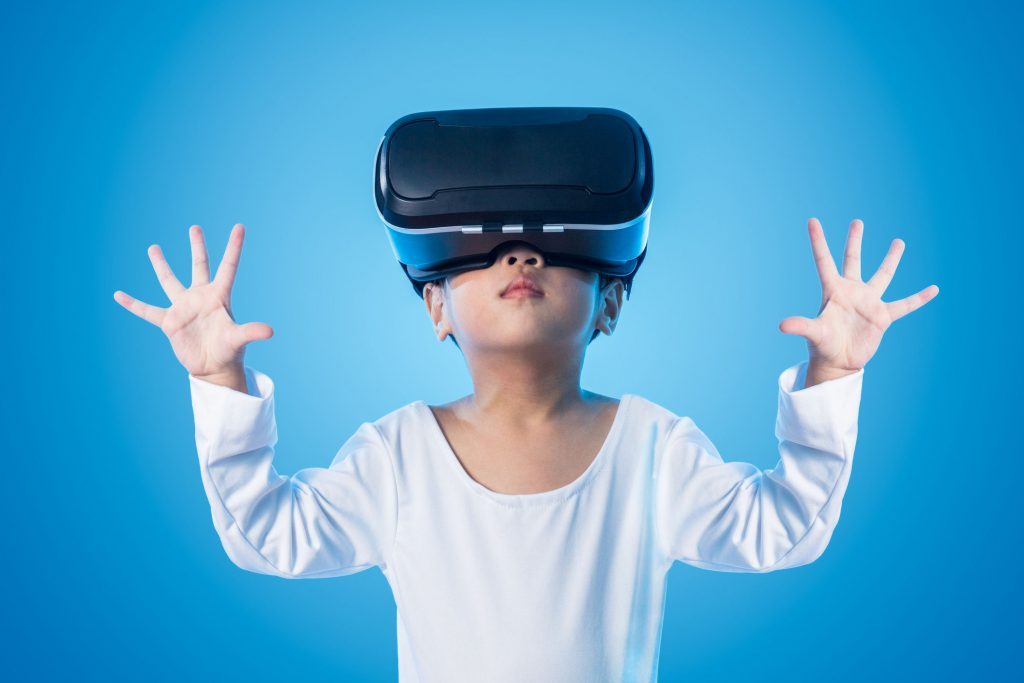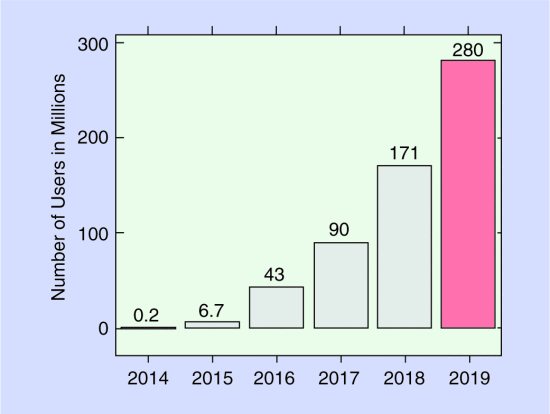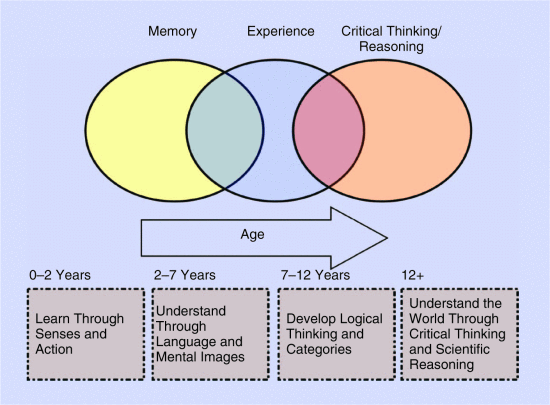 iStock
iStock Physiological and Social Impacts
According to Moore’s Law, there is a correlation between technological advancement and social and ethical impacts [13]. Many advances, such as quantum computing [22], 3D-printing [11], flexible transparent screens [1], and breakthroughs in machine learning and artificial intelligence [17] have social impacts. One area that introduces a new dimension of ethical concerns is virtual reality (VR). VR continues to develop novel applications beyond simple entertainment, due to the increasing availability of VR technologies and the intense immersive experience. While the potential advantages of virtual reality are limitless, there has been much debate about the ethical complexities that this new technology presents [9], [19]. Potential ethical implications of VR include physiological and cognitive impacts and behavioral and social dynamics. Identifying and managing procedures to address emerging ethical issues will happen not only through regulations and laws (e.g., government and institutional approval), but also through ethics-in-practice (respect, care, morals, and education).
Including Ethics in the Design
Integrating ethics and moral sensitivity into design is referred to as “anticipatory technology ethics” by Brey [4] and “responsible research and innovation” by Sutcliffe [23]. These researchers emphasize the vital importance and responsibilities that designers have on technologies and their capacities, as well as designers’ moral obligations to the public. These obligations may include a wider long-term view, taking into account social involvement, environmental impacts, and other repercussions. Moral responsibilities related to technology have long been a subject of debate. For example, guidelines presented by Keith Miller [12] and other researchers on the topic of moral responsibilities emphasize that people who design, develop, and deploy a computing artifact (hardware or software) are accountable for that artifact, and for the foreseeable effects of that artifact.
Traditional moral responsibilities in the physical world do not necessarily translate to virtual worlds created by designers.
However, it is unclear how to predict the impact of virtual reality technologies (i.e., foreseeable effects). There is also a question of “foreseeable use” versus “intended use.” Hardware engineers may develop virtual reality technologies that are then used for unintended purposes in applications and by software developers.
In the wake of society’s exposure to VR, and due to today’s powerful computer systems, designers are able to create and develop complex interactive virtual worlds. These immersive environments offer numerous opportunities — both good and bad. But organizations and designers are not obligated to obey ethical restraints. There is also the element of hackers, and the issue of immoral exploitation of the technologies. These ethical questions arise partly because VR technologies are pervasive and difficult to classify and identify, and because it is difficult to predict their short- and long-term impacts. VR technologies also raise questions about legal responsibility, for example if software and hardware are used incorrectly or in unethical ways (see Figure 2 for an outline of the ethical challenges connected with VR technologies).
So as VR has hit the mainstream, much debate has arisen over its ethical complexities. Traditional moral responsibilities do not always translate to the digital world. One aspect we argue is essential to ethical responsibility for virtual reality is that VR solutions must integrate ethical analysis into the design process, and practice dissemination of best practices. In the digital era, organizations and individuals need to uphold ethical and professional responsibilities to society and the public. Creativity should be combined with diligence. Decision making, ethics, and critical thinking should go hand in hand throughout the development process. Development needs to include future predictions, forecasting impact, evaluating and elaborating on possible consequences, and identifying any issues with openness and transparency.
Benefits and Applications of VR
VR technologies are commonplace in today’s marketplace, with key players including, Google, Microsoft, Oculus, Sony, and Samsung seeking to push the limits and applications of VR. VR first appeared in the 1980s, but then faded away. This time VR is here to stay [3].
Related to VR, we need to acknowledge the importance of active real experience. Active real experience is a fundamental element within VR (i.e, the illusion of “real”). Real, or close-to-reality, experiences have an impact on the user by providing “positive” experience. VR with these touted benefits include games, films, education, training, simulations, communications, medical (i.e, rehabilitation), and shopping.
Due to the availability and flexibility of VR technologies, the number of virtual reality users is forecast to reach 171 million by 2018, with the VR market set to continually grow at an extraordinary rate [20]. In 2018 [21], the value of the global consumer virtual reality market is estimated to be U.S. $4.5 billion (see Figure 1).
Need for Investigation
Currently, there is a lack of information on the short- and long-term physiological impacts of VR. There is also not enough known about who and what types of individuals are using VR (age, types of experience, attitudes, and levels of digital sophistication). Many questions relate to individual attributes, and to what degree the user needs to possess “critical reasoning” abilities.
The intersection of ethics and virtual reality has to date focused primarily on individual issues, for example, specific content, or blood or violence. While these dilemmas are important, many other subtler ethical issues relating to virtual reality demand the attention of designers, scientists, engineers, and related communities. Designers, programmers, and testers usually focus on specific areas, yet they could be involved in contributing to solutions to ethical issues, or they could be responsible for inputting ethical concerns. Frequently, designers must make decisions based on the lens of their knowledge and experiences. But designers’ scope of knowledge does not always encompass the wide range of areas that might impact the public related to physiological, social, or ethical aspects.
Ideally, consumers should be entitled to know what “tests” have been done to ensure public safety, including physical and mental safely, for young and old, in all situations and environments. In addition, any “possible” problems or “neglected” issues should be explicitly stated as a matter of public and moral obligation, not just for legal purposes. Of course, this might be challenged by managerial decisions — any “questioning” or “refusal” (or even public announcement without permission due to NDAs) might impact the individual’s career. Hence, regulators need to step in and ensure “designers” are accessible and the facts are not compromised. Prevention is better than “correction.” We want to avoid reacting to a disaster after it has happened. We want to solve the problem before it manifests itself, using forward thinking, preventative measures to create a safer more reliable future-proof technology or solution.
There is also debate about corporations “waiting” for regulators and legal liabilities to push them towards more moral, safer designs. This attitude can cause significant harm to the public.
Complex Intercoupled System of Components
We need to look VR solutions as a whole, and not just at individual components such as specific components, interactions, or sounds. The interrelated and synergistic operation of the system can have a broader impact on the user. VR combines multiple senses (audio, visual, touch, and movement) each of which influences the immersive experience.
Passive and active involvement of the user, where a user may sit back and “watch” or experience the situation “autonomously” is one possible experience. Another can be more active involvement, where the user is required to “hammer” home the activity or action. The complexities of designing a VR solution involves millions of lines of code and a myriad of three-dimensional content elements that provide texture and geometry, not to mention sounds and specialist hardware like headsets and head-tracking tools. While software testing has always been challenging [15], [25], testing the physiological, ethical, and social aspects introduces a new level of difficulty. Challenges of addressing specific scenarios and the complexity of the system are compounded by the new levels of freedom in VR – by the variety of uncertainties and situations that are possible.
VR designs need to account for human interfaces, environmental perceptions, levels of freedom, user-user interactions (social/networking), coordination, and control. Different users and developers will use the hardware/software in different ways, creating multiple outcomes and choices. Strong trends towards online solutions, with user-user interactions and communication increase the possible complexity, and also may lead to “swarms” of virtual users – another area where further research is needed.
We anticipate that before long, swarms of virtual users will be able to interact and communicate. We need to ensure this is done safely. Close coupled interactions of multiple users will also raise questions of privacy and hacking, i.e., of possible intentional tampering or non-legitimate accessing of user resources.
Over-Trusting
The public and users have a predisposition to trust technologies from big brands, often involving acceptance without questioning. While VR solutions possess the power to entertain, engage, and tantalize users, they also have the power to cause significant physiological trauma. There are worrying concerns about over-trusting new technologies. Some questions, designers and users need to ask themselves are:
- Is it possible, for example, for the VR system to be “hacked” without the user knowing (i.e., modifying/injecting changes into the user’s virtual world).
- How much does “age” impact the experience in terms of digital awareness, overall experience, mental sensitivity, etc.?
- How will a user respond to unforeseen troubles? (For example, will they jerk, fall over, scream, harm themselves?)
Interestingly, with regard to the last point, if a person is immersed and believes they are really acting out the experience, they will react as they would in a real situation (i.e., behaviors could emerge). The user would be actively and cognitively engaged with the virtual environment. The ways that VR intertwines user’s psychological and behavioral aspects must be taken into account by the designers.
Regulations
As VR developers and manufacturers pursue significantly different design pathways, it makes it difficult for regulators to keep up and to develop rules and regulatory standards for safety. Among the crucial divides relates to the “applications” of VR, that is, to the type of interfaces, uses, the people who use them, etc. Of course, companies seek competitive advantage and are less interested in sharing information that might injure trade secrets. There needs to be a balance achieved between openness, reliability, and corporate rivalry and profit. Arguably, standards for VR technologies would need to have a specialized set of safety features, beyond traditional engineering tests and approaches to evaluate safety.
While some issues could be evaluated using traditional standards, such as violence and types of content, the immersion aspect of VR introduces additional risk factors that need to be accounted for, including aspects related to VR’s training and manipulation of the mind. Designers will also need to take into account approaches and solutions to reduce risks and harm. They need to insure that users are not left free to expose or harm themselves without guidance.
Relevant professional communities need to become collectively involved in developing rules and guidelines around the design process. Importantly, designers need to incorporate ethical thinking when creating innovative and creative solutions using virtual reality that incorporate safety and impact considerations. Each designer should look upon their creation or design and consider her or his ethical obligations. Designers, testers, and managers need to take a “value-sensitive” approach, and contemplate the implications of what they are creating.
How would we “demonstrate” that a virtual reality technology is safe? This also leads onto questions of levels of safety and risk, and to consideration of ratings. There may also need to be “warnings” emphases, about possible side effects. Also there is the question of how the design will impact others, and questions of social factors. For example, could the technology incite or promote unlawful behavior?
Risks to Children
Studies have shown children are most vulnerable when it comes to VR technologies, as they are highly susceptible and can more easily confuse what is real and what is not real, i.e., they likely may be less able or unable to distinguish between the real world and the virtual world [18]. For example, in a study by Segovia and Bailenson [18], young elementary children watched their virtual doppelganger swimming with orcas. When these kids were questioned a week later, they said they believed their virtual experience to be real. In recent studies [2], young children would connect with “virtual characters” (avatars). Children would see the “avatar” in VR as more real (compared to characters or avatars on other mediums, such as television). The avatar in the virtual environment would be more influential compared to the television equivalent, making it more difficult for the children to inhibit their actions or not follow the avatar’s commands. And it is not only young children who internalize VR scenarios – these scenarios also impact young adults.
For example, elder adolescents have been found to be particularly sensitive to being socially excluded in a virtual environment. What this means is that parents need to be particularly careful about the type of VR content they allow their children to view (see Figure 3). Note that the majority of research has been done on young adults, with little understanding of what happens to younger children when they are exposed to virtual worlds [5], [18].
Figure 3.Psychological Factors – Stages of learning and human development impact how our environment and experiences change as we get older.
Post-Traumatic Stress Disorder (PTSD)
Post-traumatic stress disorder (PTSD) is commonly caused by a directly witnessed real-life event that is life threatening or violent in nature. Current clinical diagnosis of PTSD excludes exposures that occur through electronic media, including movies and pictures [6], [8], [16]. However, given the increasing ability to stimulate the range of senses beyond sight and sound, due to the immersive and interactive nature of VR, one has to wonder if at some point these experiences will result in the brain’s fear centers getting rewired in a similar way to that seen in PTSD. One could hypothesize that if a person felt that their VR experience was real (i.e., if they really felt they were at risk of harm), and if they did not have a way of voluntarily ending the experience, they could experience rewiring of fear circuitry of their brain in a manner similar to PTSD. They would then perhaps have a range of PTSD like symptoms.
Desensitization
Funk et al. [7] believe repeated exposure to real-life and to entertainment violence could alter cognitive, affective, and behavioral processes, possibly leading to desensitization. The study showed a relationship between real-life and media violence exposure and desensitization as reflected in related characteristics. One-hundred-fifty fourth and fifth graders completed measures of real-life violence exposure, media violence exposure, empathy, and attitudes towards violence. Regression analyses indicated that only exposure to video game violence was associated with (lower) empathy. Both video game and movie violence exposure were associated with stronger pro-violence attitudes. The active nature of playing video games, intense engagement, and the tendency to be translated into fantasy play may explain negative impact, though causality was not investigated in the present design.
Not all Bad
There are “dangers” with anything – however, we must not forget the huge benefits of combining VR with games, in education, rehabilitation, training, and of course, entertainment [10], [14], [24]. VR is a technology – how we use VR, for good or bad, is up to us.
And VR is not the only issue affecting a user’s mental health. Many other factors outside VR influence the individual’s mental health, e.g., work, social life, or family.
VR and games also offer a means of escape. Virtual reality lets our imagination go to new heights because anything is possible. Virtual Reality helps us to test the information learned in a “real-life” situation so that we are able to evaluate – simulate – theoretical knowledge in a practical implementation. With VR we can simulate how machinery works and responds, and we can replicate soft skills such as human actions and behaviors. Another huge area is how virtual reality impacts learning, making learning fun, exciting, and visual.
Summary
There has been and continues to be rapid growth in Virtual Reality technologies. It is estimated that there will be 300+ million VR users worldwide by 2020. There remains room for debate around the topic of ethical responsibilities for these technologies. While it can be argued that makers cannot be held 100% responsible for their designs, each company and individual designer should demonstrate reasonable caution, through monitored trials and testing. Designers should not ignore possible mental health and safety issues, or physiological impacts or social and ethical factors. Steps to address these issues might include interactive testing using human and automated users.
We suggest adding additional investigation and analysis testing stages to the development of virtual reality technologies in efforts to protect the public. These tests might not focus on physical health and safety concerns, but rather on physiological and social influences. Currently, no such trials related to physiological or social factors are required, monitored, or enforced. But a large number of virtual reality applications are already on the market, suggesting that technological and economic forces may overrun efforts to protect the public good. The fact that VR is already available does not mean there is no need to address this issue, and it should not be left until it is too late.
The growth of VR technologies leads to an increase in new products and accelerated development of VR in industries such as education, healthcare, household management, tourism, and video games, impacting social and economic sectors. On one hand, there will be huge opportunities for new and innovative VR applications, beyond entertainment uses. On the other hand, there are numerous challenges and ethical issues that need to be addressed. More research needs to be done to investigate the psychological impact of VR, especially on young children, both in the short and long term. However, if the VR economy is to continue to grow while maintaining sustainable healthy new developments, it must be supported by scientific research to investigate the social and ethical issues around these technologies.
ACKNOWLEDGMENT
The author would like to thank the reviewers for taking time out of their schedules to provide insightful and helpful comments to improve this article.
Author Information

Ben Kenwright is with the University of Bolton, Bolton, U.K. Email: bkenwright@ieee.org.
To view full article, including references and footnotes, click HERE.









 JOIN SSIT
JOIN SSIT